Capsized Review
Capsized – for all intents and purposes – is the debut title from AlienTrap Games, a two man team consisting of programmer Lee Vermeulen and artist Jesse McGibney. The game is a retro style, run-and-gun shoot/platformer set on an alien planet after a team of space-travelling astronauts crash land and quickly run into issues with the natives. Channelling video game’s 8-bit roots with its side-scrolling and platforming, Capsized fits in nicely with the ever-expanding roster of games paying homage to the past, while trying to find a home with modern audiences. While plenty of independent forebears have proven that there is a home for games like Capsized, it is difficult for it to stand out while so many other titles are doing the same thing, and doing it better.
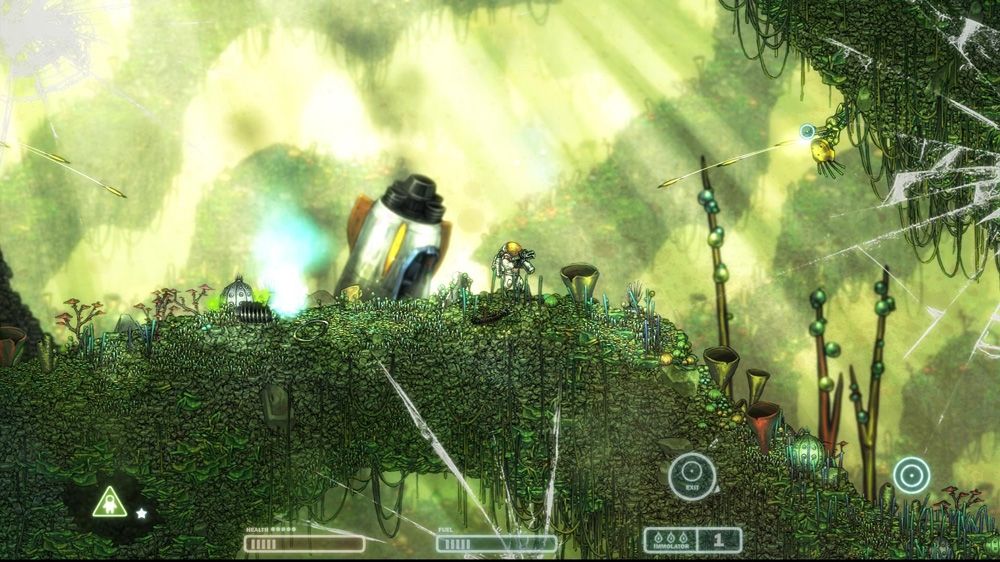
The majority of your time playing Capsized will be spent battling the ecosystem of the alien planet the explorer protagonist is stranded upon at the game’s beginning. The combat balances between purposeful and chaotic, a strange blend that feels oddly at home with each other. Sometimes I would find myself inching along, attempting to get the drop on unsuspecting monsters, other times I would be free falling through the sky, blasting anything I could see. While the twin-stick functionality of the shooting leaves much to be desired, AlienTrap compensates with a designated auto-aim button to aid the sticky manual controls. The auto-aim is nice and often effective, but it degrades most large scale encounters to simply pulling the trigger, and refocusing the auto-aim to different targets. This takes away much of the reward in Capsized’s combat as much of your success feels attributed to realizing your enemy is dead and moving on.
The combat may feel unrewarding, the pace changes consistently enough to keep you on your toes. The handful of weapons the game provides each have their own style and alternate functions that make each encounter feel a bit different than the one that preceded it. Adding to the change of pace are the mission objectives that cycle between destroy, collect, and escape. These three objectives have slight variations mission to mission, keeping the game fresh, even when the straightforward combat is not.
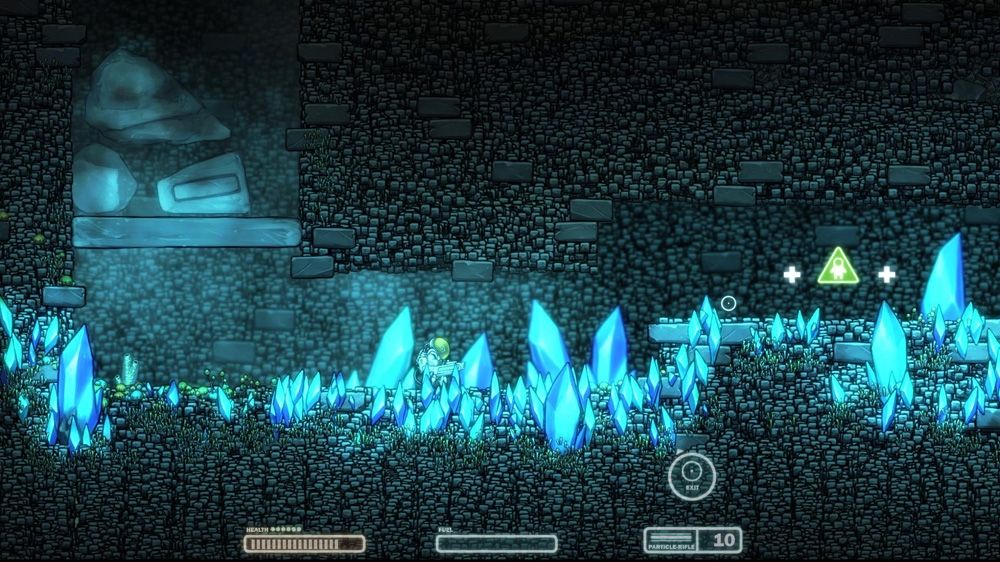
While the run-and-gun nature of Capsized makes it feel iterative, the game features a physics system that is the crux of the game’s uniqueness. The planet on which the game is set has different rules of gravity and terrain compared to Earth, and it allows players to get creative in how they go about traversing the levels. In addition to the planet’s natural differences, players will have tools like a gravity hook and jet pack to help them get around. The jetpack, in particular, is a powerful ally and managing fuel can be crucial in certain levels.
The physics system and gravity hook are interesting elements, they are also have a fair share of frustrations. The terrain, while ostensibly soil and foliage, is slippery as ice and I constantly found my character sliding around, unable to stand still when I needed him to. It is also difficult to comprehend how gravity and weight play in this world’s atmosphere. Sometimes taking a giant fall will kill you, other times you land unscathed. When I would slide off of a floating rock, I never knew if it was game over or if I would be fine; it felt like the fall damage was calculated arbitrarily. These problems carry into jumping up walls, or clearing gaps. I felt like I could never accurately anticipate how high I would jump or what I could count on for security. Part of this feels intentional, shipwrecked on a strange planet it would only feel natural to have the planet’s forces of nature working against you, however it also feels like poor design as the wonky physics can make simple tasks horridly annoying. Often these speed bumps are forgivable, but deeper in the game the problems begin to become more apparent.
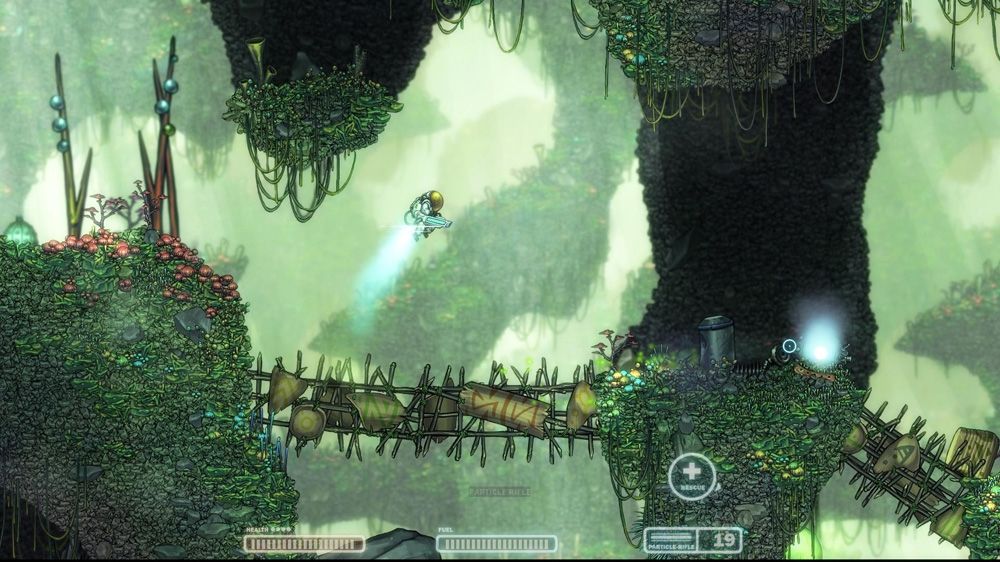
The narrative of Capsized is told in a simple, straightforward manner. Foregoing cutscenes and voice-overs, most often the story is conveyed in two or three well-drawn panels. In one of the game’s latter stages, a piece of equipment breaks and the narrative panel highlights the protagonist’s exasperated, disbelieving, ferociously angry face. The panel was poignant, as it adequately conveyed the moment so well and also mirrored my own emotions. This narrative is so cut and dry that it eliminates the possibility for being extraneous or convoluted, but at the same time it is filled with video game tropes. After crash-landing, your crew is captured by the tribal natives who immediately turn hostile. To escape the planet, you must kill hundreds of these natives, then destroy their religious relics and their superpowered leaders. There’s a good-natured wink and nudge to the whole story, but it does have a smudge of crassness about it.
As it is the only manner of storytelling employed by the game, the art style in Capsized is pushed to the forefront. Lucky for us, and the game, the hand-drawn art-style is engaging and intriguing. Between the Braid-esque story book qualities it exhibits to the geometrical shapes floating about in the sky, Capsized’s style grabs a hold of your eyes and never lets go. While the changes between levels are subtle, there is enough variation to keep things from becoming dull. Layered beneath the art style, contributing to the game’s distinct character, is a haunting, electronic score. Riddled with echoing tones and heavy beats, the score helps establish the sci-fi nature of Capsized.
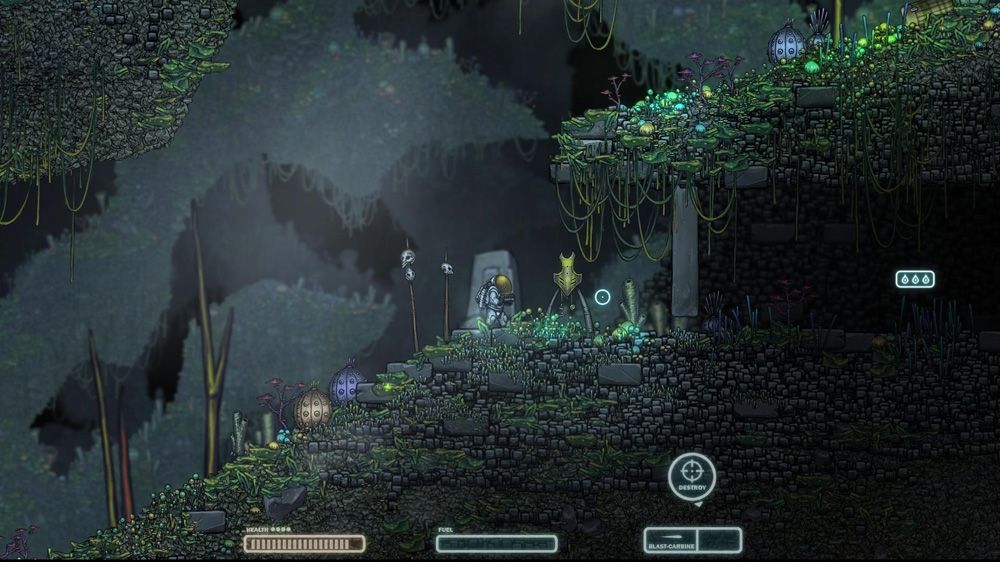
The main campaign of Capsized is a bit on the short side, my playthrough clocked in at about 5 hours; I could see that time growing or shrinking by an hour due to skill and thoroughness. Either way, the game is a pretty quick affair, thus a handful of arcade modes have been added to give players something to do once the campaign is completed. These arcade modes are fun distractions and not a bad way to mess around with the game after completion. However, none should attract any long term investment. You might glance at the leaderboard once or twice, but there doesn’t seem to be anything all that addicting to keep players coming back.
Capsized means well. There is a lot of flair to the game that makes it an intriguing concept and interesting package. The art style, the score, the aesthetics draw you in and convey the game’s heart with a simplistic, yet meaningful approach. The problem is, that when you flip that coin and talk about the gameplay, it is the exact opposite. The gameplay seems simple on its surface, but with its different guns, puzzles, strange physics, a variety of enemies, and creative platforming, there is actually a lot going on under the hood. While all of these aspects are done with some skill, none of them feel totally engrossing. The strongest word to describe Capsized is “shooter”, which is not fair given how much complexity surrounds its run-and-gun style. Nonetheless, when you boil it down, Capsized’s shooting mechanics are rough and dull for a shooter, even one with all the quirks the game boasts. As I was only able to review the Xbox 360 version, I can only attest to the control scheme on that platform. I did not get a chance with the PC version, but I could imagine the game would handle better, allowing players the accuracy of a mouse.
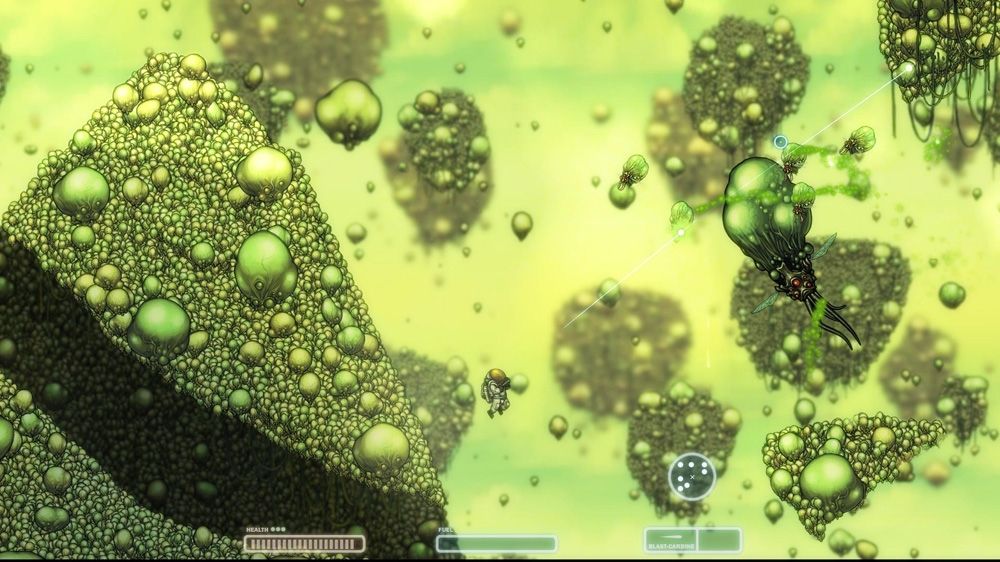
Capsized is a bit of an indie darling. It has a lot of the ingredients that endear those in search of small games with something different. Unfortunately, the game’s spirit is derailed by gameplay issues, watering down the rich aesthetic experience and leaving you with something a bit bland. Oftentimes independent games feel like a steal as the sub-$60 price tag seems impossible given the quality of the game. That’s not the case with Capsized, where the $10 price seems appropriate. I am excited to see what AlienTrap has in store for us in the future, as there is a lot of promise in Capsized that shows the skills of the developers. For now, however, that skill and promise is untapped.
